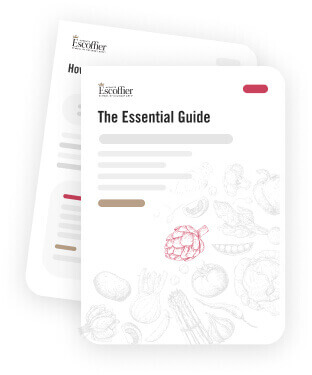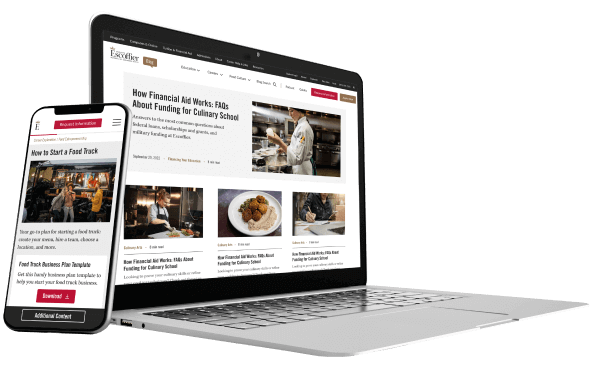Listen to This Article:
“TikTok made me try it” has become the unofficial motto of modern dining culture. From viral pasta recipes to trending restaurant visits, social media doesn’t just influence what people cook at home – it drives where they choose to eat and which culinary professionals they follow.
Social media has become integral to the industry, transforming everything from personal branding to restaurant marketing, changing how chefs build their visibility and how culinary professionals pursue their career goals. For many in the industry, maintaining an online presence isn’t just helpful – it’s become essential.
This shift presents both opportunities and challenges. The same platforms that can help launch a chef’s career can also make or break a restaurant’s reputation. Understanding how to navigate these digital waters effectively may help you stand out in an increasingly competitive industry.
The Power of Social Media in the Culinary Industry
Social media has transformed food culture, creating new expectations for everyone in the industry, from line cooks to executive chefs and restaurant managers. Here’s how the shift can impact your work:
- Visual presentation is more important than ever — Dishes need to look good under smartphone cameras, and plating techniques that photograph well have become standard practice
- Dining room design considers social media — Every detail is planned with social media posts in mind
- Customer expectations have evolved — Diners now seek Instagram-worthy experiences they can share
- Revenue opportunities are directly tied to shareability — 50% of diners claim that social media can influence their restaurant choices, while about 22% of customers say they’re motivated to return to a restaurant due to its social media presence
These statistics reflect trends that could impact your bottom line and professional development. It means your creative skills may now extend beyond flavor profiles and technique and deeper into creating experiences that people want to capture and share. Restaurant managers may need to consider how every aspect of their operation—from the food to the décor to the service style—will translate to social media.
Social Media as a Restaurant Marketing Tool
Engaging Customers and Driving Business Growth
For restaurant managers and owners, social media can offer unprecedented opportunities to connect with customers and build relationships that extend far beyond a single dining experience.
Restaurants can use social media to promote daily specials, announce events, and showcase seasonal menu changes. They can share behind-the-scenes content that gives customers a peek into the kitchen’s creativity and hard work. They can (and should!) respond to reviews, both positive and negative, showing they care about customer experience.
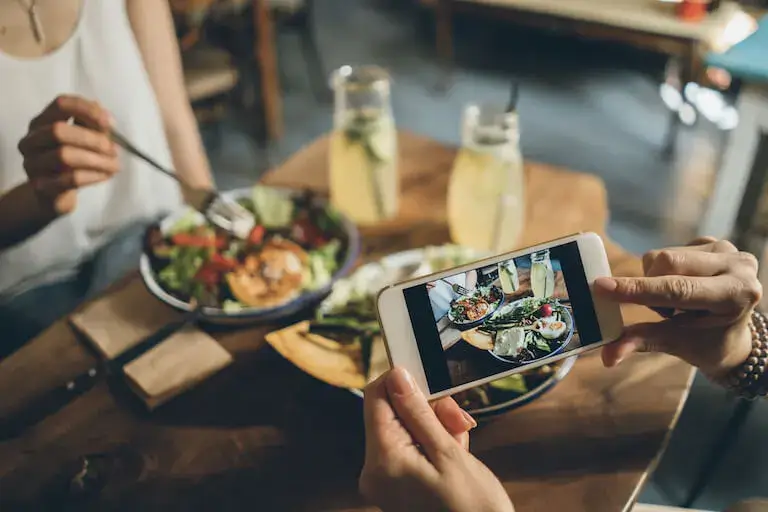
When customers share their dining experiences online, they can help keep your restaurant top of mind and strengthen connections long after the meal.
The Role of Visual Storytelling
We live in a visual world, and social media platforms give restaurants a chance to show how moist their cake is, how creamy their sauces are, or how perfectly seared their steak is. These visuals do something that traditional menus can’t – they can create desire and anticipation before customers even walk through your door.
Visual storytelling goes beyond just food photos. It can include images of your team at work, your dining room’s atmosphere, the local farmers who supply your ingredients, and the passion that drives your restaurant’s mission.
The impact of this visual approach shows up in customer behavior: 71% of patrons say they’re more likely to recommend a restaurant that responds quickly on social media. This statistic reveals something important: customers notice how you handle your online presence, and it can affect their willingness to promote your business to friends and family.
Many restaurants treat their social media accounts like digital storefronts. They maintain consistent posting schedules, use high-quality images, and create content that reflects their brand personality. Some have even built dedicated followings that drive significant traffic to their physical locations.
Modern Word-of-Mouth: Influencer Partnerships and Trendspotting
When food influencers share content about your restaurant or engage with your brand, they’re essentially giving their personal recommendation to thousands of followers who trust their judgment.
These partnerships can work because they feel authentic. Unlike traditional advertising, influencer content appears in users’ feeds as recommendations from people they follow and admire.
Identifying the right influencers takes careful strategy and alignment with your brand goals. You want partners whose audience reflects your target customers and whose content style matches your brand values. Local food bloggers, neighborhood advocates, and micro-influencers often provide more value than celebrities with massive but disconnected followings.
Smart culinary professionals also use social media and follow influencers for trendspotting. Platforms like TikTok and Instagram reveal emerging food trends months before they hit mainstream media. By staying connected to these conversations, you can adapt your offerings to meet changing consumer preferences.
Essential Social Media Strategies for Restaurant Managers
Transforming your restaurant’s online presence starts with consistency, connection, and a little creativity. A thoughtful strategy can help you build customer loyalty, grow foot traffic, and keep your brand top of mind—even when diners aren’t at the table. Here are some practical tactics to get you started:
- Plan ahead with a content calendar. Use it to schedule posts around daily specials, seasonal menu changes, holidays, and upcoming events. A consistent presence helps build anticipation and strengthens your brand voice.
- Put your people front and center. Introduce staff members, spotlight achievements, and celebrate your team. Showcasing the humans behind the food builds trust and connection with your audience.
- Engage with your customers. Respond to reviews and comments—both positive and negative. Aim to reply within 2–4 hours, and use direct messages for more sensitive concerns.
- Tap into user-generated content and influencer partnerships. Repost customer photos (with permission), encourage the use of branded hashtags, and collaborate with local micro-influencers who often have highly engaged, loyal audiences.
- Give followers a peek behind the curtain. Share stories from the kitchen, highlight ingredients and suppliers, and show the craftsmanship behind your most-loved dishes. This kind of content builds authenticity and intrigue.
- Use promotions and data wisely. Announce limited-time offers, promote slower dining times, and monitor what content drives the most engagement, clicks, and conversions so you can refine your approach over time.

Same soup, different impact: Professional food styling and thoughtful plating can elevate your social media posts, making dishes look more vibrant and crave-worthy to customers.
Social Media for Your Personal Brand
Personal branding might sound like marketing jargon, but it’s become a key career tool for culinary professionals. Social media can be a way for professionals to show off their skills and what they’re capable of, as well as a way for them to connect and collaborate with other professionals.
Networking and “who you know” can often go a long way toward helping you secure positions and open up new opportunities, and social media can be a fast and fun way to expand your network. Chef Rodney Smith, an Escoffier graduate and Atlanta-based chef, took his first steps toward becoming a chef by reaching out to another chef online, a move that helped him dive deeper into his passion. He has since used social media to share his own creations and showcase his work with the New South,a pop-up dinner collective in Atlanta, Georgia.
Social media can allow chefs to create and share a portfolio in ways that didn’t exist just a few years ago. The storytelling aspect of social media might mean you demonstrate how you made certain parts of the dish, and it can also help show potential employers or customers what they can expect from you.
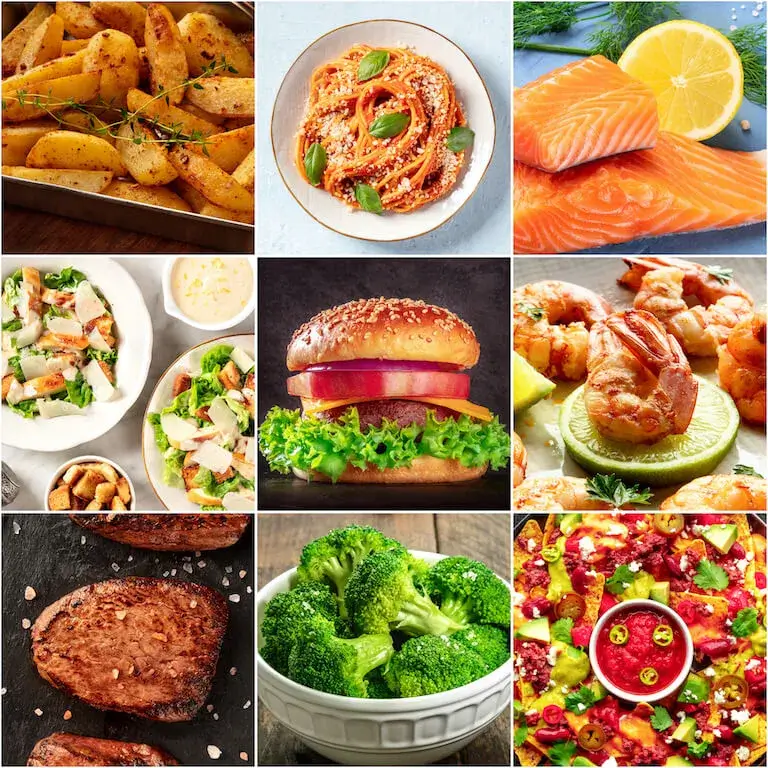
Your social media portfolio can be your culinary menu online: Showcasing a range of dishes like these can highlight your versatility and creativity to potential employers and followers.
Pick the Right Platform for Your Culinary Goals
Each social media platform can play a different role in building your professional presence. Use them strategically:
- Instagram: Showcase your dishes, plating, and kitchen aesthetic through strong visuals
- TikTok: Share quick how-to videos, trending recipes, and behind-the-scenes content with personality
- LinkedIn: Highlight your experience, career growth, and industry connections in a professional tone
- Facebook: Reach local customers, promote events, and build community through posts and groups
- YouTube: Publish longer cooking tutorials, chef interviews, or restaurant walkthroughs
“Through the food photography class (shout out to Chef Shaffer) I was able to level up my photography skills of my food, and adding them to my resume led to me getting a better-paying sous chef job,” says Zackery Laviner, Online Food Entrepreneurship Student.
*Information may not reflect every student’s experience. Results and outcomes may be based on several factors, such as geographical region or previous experience.
Your Socials Might Get You Hired
More employers are looking at what potential hires do online, using social media as an informal portfolio to better understand candidates. A 2023 survey by The Harris Poll found that 70% of employers use social media to research potential job candidates.
Your social media presence can showcase your personality, work ethic, and passion for the industry in ways that a resume can’t. It’s an opportunity to make a memorable impression before you even walk into an interview.
*Information may not reflect every student’s experience. Results and outcomes may be based on several factors, such as geographical region or previous experience.
Employers recognize that team members who understand social media could bring additional value to their operations. They might contribute ideas for content creation, engage naturally with customers online, or help maintain the restaurant’s digital presence. While these aren’t job requirements, they can set you apart from other equally qualified candidates.
This advantage extends to leadership roles as well. Executive chefs and restaurant managers who demonstrate social media awareness can stand out because they understand how modern customers discover and choose dining experiences. They can contribute insights to marketing strategies and help their establishments stay relevant in an increasingly digital marketplace.
Technology has also made social media management more accessible than ever.
“I use AI to generate Instagram captions and even an email marketing plan,” says Wes Duckworth, Escoffier Graduate and Pastry Chef. “[Using Chat GPT] can take a load off.”
Quick-Start Social Media Tips for Chefs
Ready to build your culinary brand online? Here are specific actions you can take today:
- Start with your phone’s camera – Great food photography doesn’t require expensive equipment. Use natural light, clean your lens, and shoot from multiple angles
- Post consistently, not constantly – Aim for 3-4 high-quality posts per week rather than daily mediocre content
- Share your process, not just the final dish – Behind-the-scenes content (prep work, technique close-ups, plating process) often gets more engagement than finished plates
- Write captions that teach – Share the story behind the dish, explain your technique, or mention where you sourced ingredients
- Use strategic hashtags – Mix popular culinary tags (#chefslife, #foodie) with niche ones (#sousvidetechnique, #localsourced) to reach the right audience
- Engage with culinary communities – Follow and interact with other chefs, food bloggers, and industry professionals in your area
- Document your learning journey – Share new techniques you’re practicing, classes you’re taking, or mentors who inspire you
Build a Strategic Social Media Strategy
Getting Started: Audit and Define Your Brand
Creating an effective social media presence doesn’t require a marketing degree, but it does take strategy and consistency. Here’s how you can begin:
- Conduct an honest audit of your current online presence – Search your name on major platforms and see what appears. This is what potential employers, customers, or collaborators will find when they look you up
- Define your professional identity – Figure out what you want to be known for in the culinary world and build your social media presence around that. Make sure you’re showcasing what you want people to see if they’re thinking of working with you, hiring you, or eating your food
- Focus on quality over quantity – Share high-quality, authentic posts that reflect your skills and personality, including finished dishes, cooking techniques, behind-the-scenes moments, or insights about ingredients and preparation methods
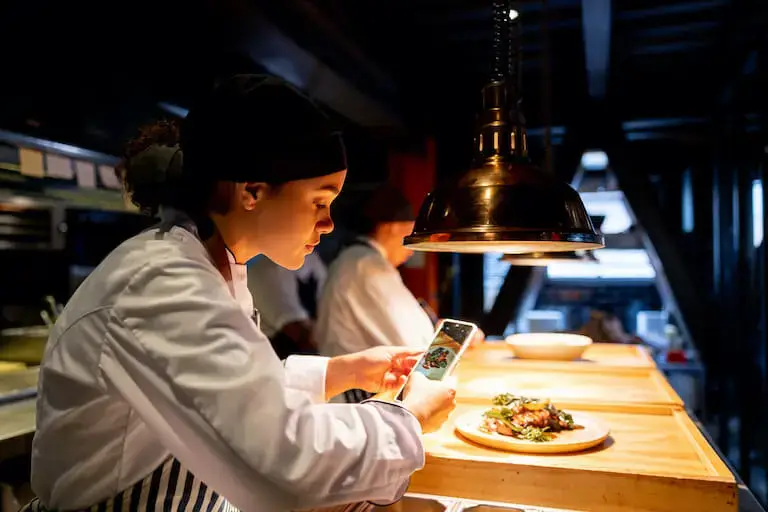
Building your culinary brand starts here: Capturing your dishes for social media can showcase your skills and define your professional identity.
Content Strategy and Platform Selection
Choosing the right platform for your goals is an important first step. Instagram is ideal for showcasing visual skills like plating and presentation. TikTok allows chefs to highlight personality and techniques in a fun, fast-paced format. LinkedIn provides a space to share your career journey and connect with industry professionals in a more formal setting.
Whatever platform you choose, focus on maintaining authenticity while presenting your expertise. People connect with both the food and the person behind it. And remember, social media is a two-way street. Instead of just posting, focus on engaging with others. Respond to comments, join conversations, and interact with other culinary professionals to build relationships and expand your reach.
Staying Current and Building Connections
Social media evolves quickly, but you don’t need to jump on every trend. Instead, focus on becoming proficient on your chosen platforms before branching out. Use these spaces not only to share your work, but also to stay connected to the larger culinary community. Social media makes it easier than ever to build relationships with chefs worldwide, exchange techniques, and discover new ideas.
Consistency is key—showing up regularly keeps you visible and top of mind. Over time, a strong and authentic presence can help with collaborations, job opportunities, and career advancement.
The 30-Day Social Media Challenge for Culinary Professionals
Ready to start but feeling overwhelmed? Commit to posting one piece of culinary content daily for 30 days. Mix finished dishes, cooking techniques, and behind-the-scenes moments.
By day 30, you’ll have a portfolio that showcases your skills and a clearer sense of your professional brand. The hardest part is starting, but the career benefits can begin immediately.
Start Building Your Social Media Presence Today
Social media is no longer optional for culinary professionals – it’s essential for career and restaurant success in today’s digital landscape. It can provide a free or low-cost way to show your skill and what sets you apart from all of the other chefs, restaurants, and dining experiences out there.
Whether you’re aiming for that sous chef promotion, planning to open your own restaurant, or looking to build your reputation as a culinary expert, social media skills could help you achieve your goals.
Escoffier’s Food Entrepreneurship program could help you develop skills in the kitchen as well as in marketing and food photography that can help you keep pace with today’s industry demands.
Contact us today to find out more about our programs and how they might help you pursue your culinary career goals.
